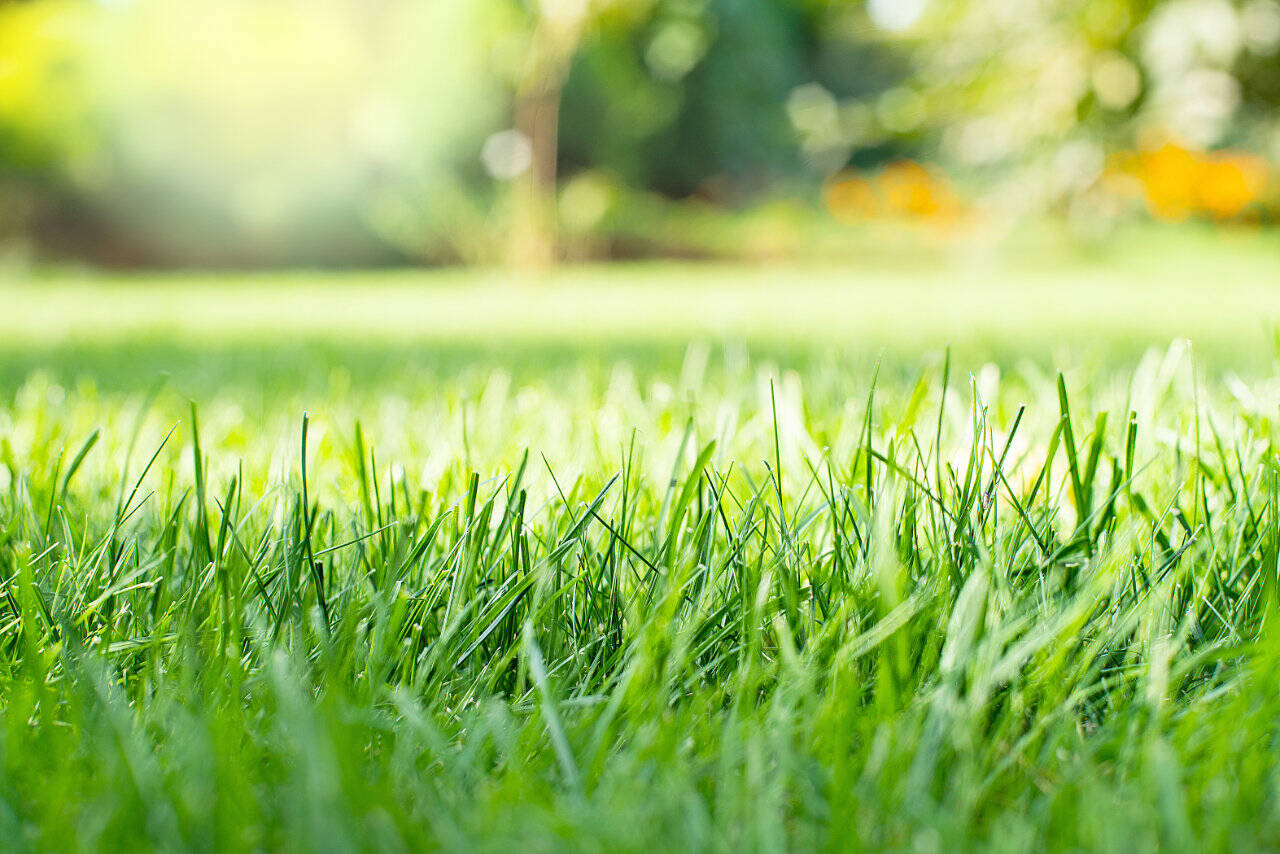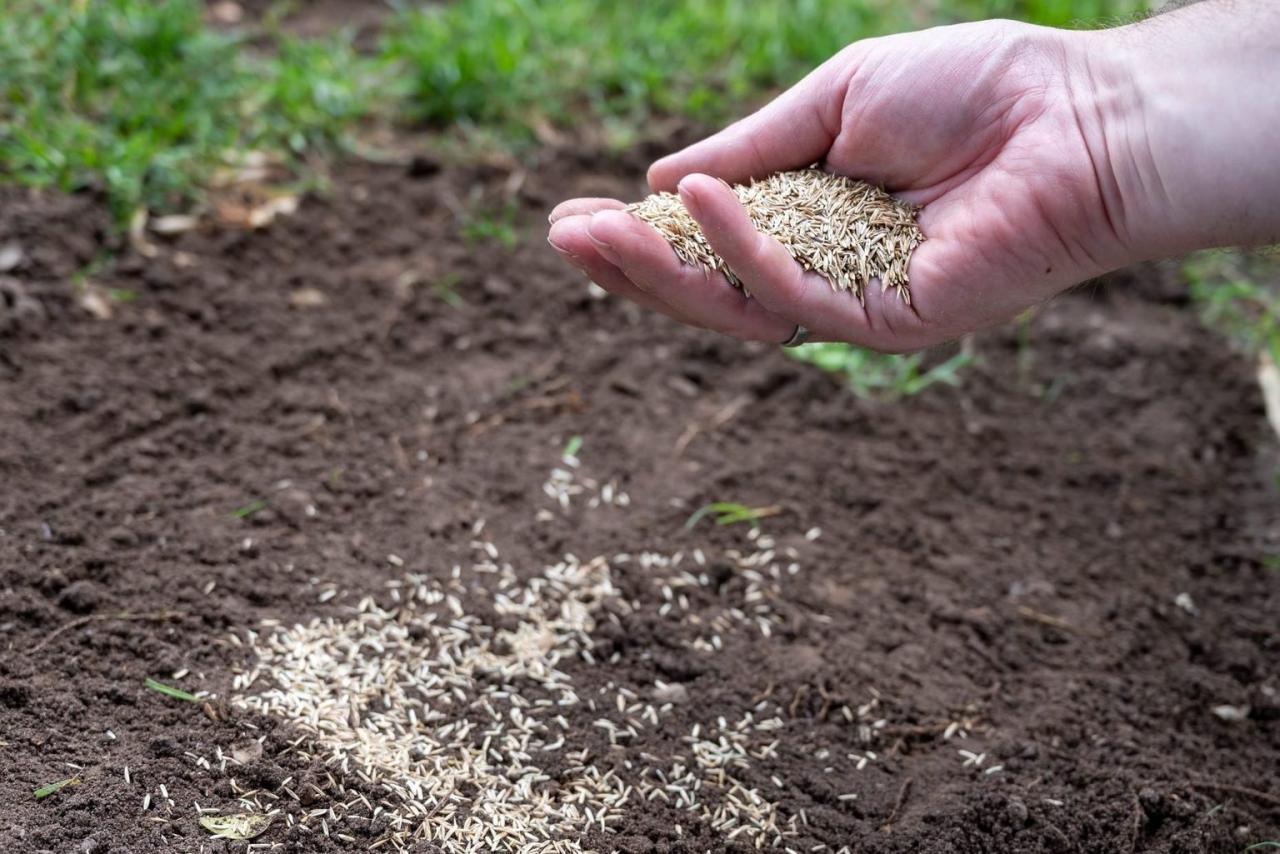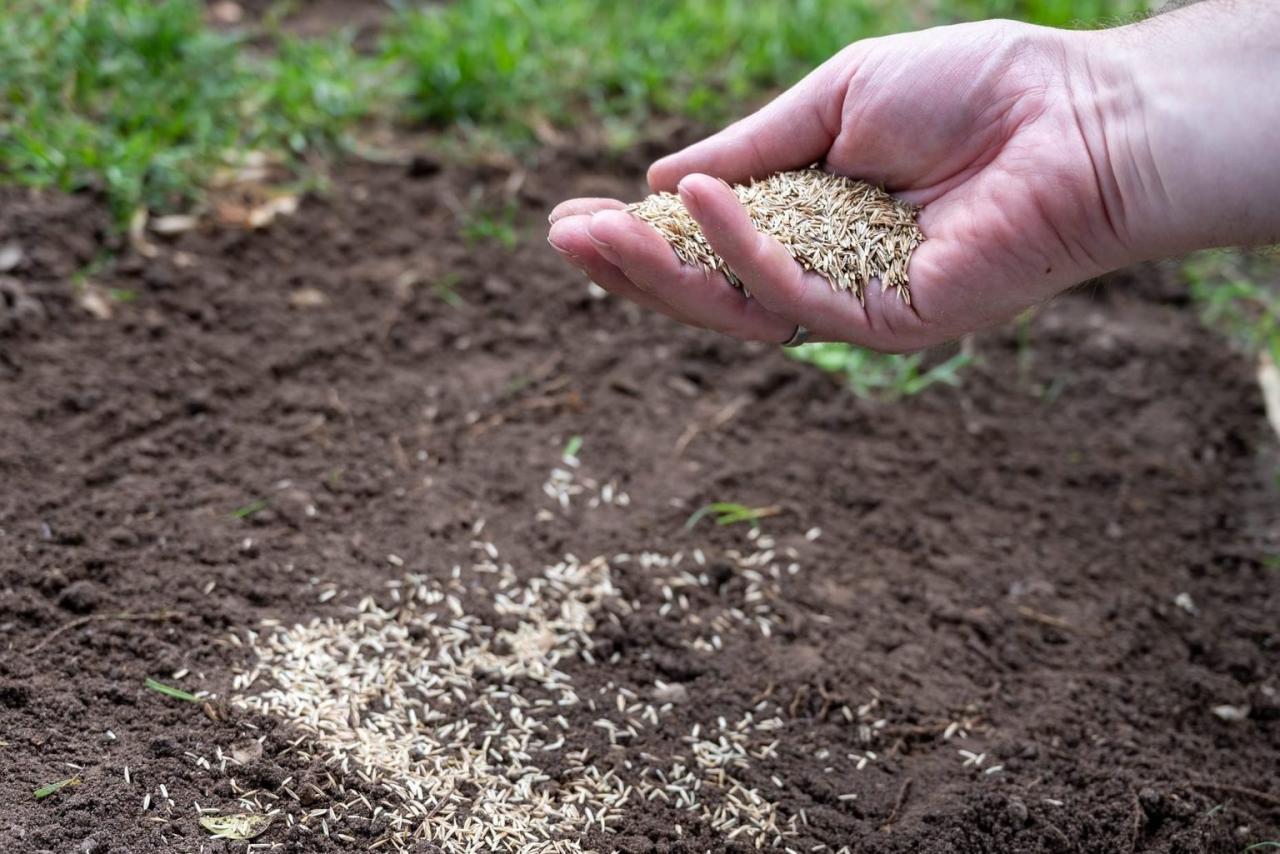Is September the Right Time for Grass Seed? Here’s What You Should Know. The arrival of autumn brings cooler temperatures, ideal for establishing a lush, healthy lawn. September is often considered the prime time for seeding grass, offering a window of opportunity for optimal growth before winter’s chill sets in.
As the days grow shorter and the air cools, the ground retains moisture better, creating a favorable environment for seed germination. The reduced heat stress of September allows newly sprouted grass to establish strong roots before the cold weather arrives.
This can lead to a thicker, more resilient lawn that can withstand the rigors of winter and spring.
September

September is often considered an ideal time to sow grass seed, especially in regions with temperate climates. This is because the weather conditions during this month are generally favorable for grass germination and establishment.
September’s Advantages for Grass Seeding
September offers several advantages for grass seeding, making it a prime time for establishing a healthy lawn.
- Cooler Temperatures:As summer heat fades, September brings cooler temperatures, which are ideal for grass seed germination. High temperatures can stress newly germinated seedlings, making them more susceptible to disease and dehydration. Cooler temperatures allow the seedlings to develop strong roots and establish themselves before winter arrives.
September is a popular time to sow grass seed, offering cooler temperatures and consistent moisture. However, while you’re focusing on your lawn, don’t neglect your other greenery! If your Rodgers plant needs a boost, check out How to Revitalize Your Rodgers Plant with These Simple Tips for some helpful advice.
Once you’ve revitalized your plants, you can turn your attention back to your lawn and ensure your grass seed has the best chance of thriving.
- Optimal Moisture Levels:September often experiences sufficient rainfall, providing adequate moisture for seed germination and seedling growth. This natural watering eliminates the need for frequent irrigation, which can be challenging during the summer months. However, it’s important to note that the amount of rainfall can vary depending on the region.
You should still monitor moisture levels and water as needed, especially during dry spells.
- Less Competition:As the summer growing season winds down, weeds are less active and competition for resources is reduced. This gives your new grass seedlings a better chance of establishing themselves without being overwhelmed by weeds.
Comparison with Other Seeding Times
While September is considered an ideal time for seeding grass, it’s not the only option. However, September offers advantages over other times of the year.
- Spring Seeding:Spring is another popular time for seeding grass. However, spring temperatures can fluctuate, making it challenging to maintain consistent moisture levels for seed germination. Additionally, weed competition can be more intense in the spring, as weeds are actively growing.
- Summer Seeding:Summer seeding is generally not recommended due to the extreme heat and drought conditions. The high temperatures can stress seedlings, making them more vulnerable to disease and dehydration. It’s also challenging to maintain adequate moisture levels during the summer months.
- Fall Seeding:Seeding in the fall, specifically in September, offers the best combination of favorable weather conditions and less competition from weeds. The cooler temperatures and optimal moisture levels create a conducive environment for seed germination and seedling establishment.
Factors to Consider Before Seeding

Before you start spreading grass seed, it’s important to understand the factors that can influence your success. The type of soil you have, the climate you live in, and the existing vegetation all play a role in determining whether your new lawn will thrive.
Soil Type
Soil type is a critical factor in determining the success of your seeding efforts. Different soil types have varying levels of drainage, fertility, and structure, all of which can impact grass seed germination and growth.
- Sandy soils: These soils drain quickly, which can lead to dehydration of grass seeds before they have a chance to germinate. Sandy soils are also typically low in nutrients, making it essential to amend them with fertilizer before seeding.
- Clay soils: Clay soils are dense and retain moisture well, which can lead to poor drainage and waterlogging. This can suffocate grass seeds and hinder germination. Clay soils also tend to be compacted, which can restrict root growth. Before seeding, consider breaking up the clay soil with a tiller or aerator to improve drainage and aeration.
- Loamy soils: Loamy soils are considered ideal for grass growth because they offer a balance of sand, silt, and clay. They drain well, retain moisture, and provide a good structure for root development. If you have loamy soil, you are in a good position for successful seeding.
Climate
Climate plays a significant role in determining the best time to seed your lawn and the type of grass seed you should choose. Different grasses have varying tolerances for temperature, humidity, and rainfall.
- Temperature: Grass seeds need warm soil temperatures to germinate and grow. The optimal temperature for germination varies depending on the type of grass. Cool-season grasses, such as Kentucky bluegrass and fescue, germinate best in cooler temperatures (60-75°F). Warm-season grasses, such as Bermuda grass and Zoysia grass, germinate best in warmer temperatures (70-85°F).
- Rainfall: Adequate moisture is crucial for grass seed germination and establishment. If you live in an area with low rainfall, you may need to irrigate your lawn regularly to ensure the seeds stay moist. In areas with high rainfall, consider seeding during periods of moderate rainfall to avoid excessive waterlogging.
- Sunlight: Most grasses need at least six hours of sunlight per day to thrive. Choose a grass seed that is suitable for the amount of sunlight your lawn receives. For example, if your lawn receives less than six hours of sunlight, you may want to consider a shade-tolerant grass.
Soil Preparation
Preparing the soil is a crucial step in ensuring successful seeding. Proper soil preparation creates a favorable environment for seed germination and root development.
While September is a popular time to sow grass seed, it’s important to consider the specific needs of your lawn and climate. If you’re encountering issues with your existing grass, it might be helpful to consult a resource like How to Troubleshoot Common Rodgers Plant Issues to identify any potential problems.
Once you’ve addressed those issues, you can confidently move forward with your September seeding project, ensuring a healthy and vibrant lawn for the coming season.
- Remove existing vegetation: Before seeding, you need to remove any existing vegetation, such as weeds, grass, or other plants. This can be done by tilling, hand-pulling, or using a herbicide.
- Test the soil: A soil test can determine the pH and nutrient levels of your soil. Based on the results, you can make adjustments to improve the soil’s fertility and create a suitable environment for grass growth.
- Amend the soil: Depending on the soil test results, you may need to amend the soil with compost, fertilizer, or lime to improve its structure, fertility, and pH. Compost can improve soil drainage and aeration, while fertilizer can provide essential nutrients for grass growth.
- Rake the soil: After amending the soil, rake it smooth to create a level surface for seeding. This will help ensure that the seeds are evenly distributed and have good contact with the soil.
Choosing the Right Grass Seed: Is September The Right Time For Grass Seed? Here’s What You Should Know
Selecting the right grass seed is crucial for a healthy, thriving lawn. Your choice should align with your specific needs, climate, and the amount of care you are willing to invest.
Factors to Consider When Choosing Grass Seed, Is September the Right Time for Grass Seed? Here’s What You Should Know
The type of grass seed you choose will have a significant impact on the appearance, health, and maintenance requirements of your lawn. Here are some key factors to consider:
- Sun Tolerance:Some grass varieties thrive in full sun, while others prefer shade. Consider the amount of sunlight your lawn receives throughout the day.
- Growth Rate:Different grass types have varying growth rates. Fast-growing grasses require more frequent mowing, while slower-growing varieties need less maintenance.
- Water Requirements:Some grasses are drought-tolerant, while others need regular watering. Assess your local climate and water availability when selecting your seed.
- Foot Traffic:If your lawn experiences heavy foot traffic, choose a durable grass type that can withstand wear and tear.
- Pest and Disease Resistance:Certain grasses are more resistant to common pests and diseases. This can reduce the need for chemical treatments and enhance your lawn’s overall health.
Types of Grass Seed
A wide variety of grass seed types are available, each with its own unique characteristics. The table below provides a brief overview of some popular options:
Grass Type |
Sun Tolerance |
Growth Rate |
Water Requirements |
Other Characteristics |
|---|---|---|---|---|
Kentucky Bluegrass |
Full Sun to Partial Shade |
Moderate |
Moderate |
Cold-hardy, forms a dense, attractive lawn. |
Perennial Ryegrass |
Full Sun to Partial Shade |
Fast |
Moderate |
Fast germination and establishment, ideal for overseeding or quick repair. |
Fine Fescue |
Full Sun to Shade |
Slow |
Low |
Drought-tolerant, low-maintenance, ideal for shady areas. |
Tall Fescue |
Full Sun to Partial Shade |
Moderate |
Low |
Drought-tolerant, shade-tolerant, can withstand heavy foot traffic. |
Zoysia Grass |
Full Sun |
Slow |
Low |
Heat and drought-tolerant, forms a dense, low-maintenance lawn. |
Bermuda Grass |
Full Sun |
Fast |
Moderate |
Warm-season grass, thrives in hot climates, requires regular mowing. |
Choosing the Right Seed for Your Needs
To determine the best grass seed for your lawn, consider the following:
- Climate:Choose grass types that are well-suited to your region’s climate. For example, cool-season grasses like Kentucky bluegrass and perennial ryegrass thrive in cooler climates, while warm-season grasses like Bermuda grass are better suited to hot, humid regions.
- Sun Exposure:Assess the amount of sunlight your lawn receives throughout the day. Choose grasses that can tolerate the sun exposure levels in your yard.
- Maintenance Level:Consider your willingness to invest in lawn care. Fast-growing grasses require more frequent mowing, while slow-growing varieties need less maintenance.
- Budget:Different grass seed types have varying prices. Choose a seed that fits your budget and meets your needs.
Benefits of Using a Seed Mix
Using a seed mix tailored to your region can offer several advantages:
- Improved Lawn Health:A seed mix combines different grass types with varying strengths and weaknesses, creating a more resilient and diverse lawn that is less susceptible to pests and diseases.
- Enhanced Appearance:A seed mix can create a more visually appealing lawn with different textures and colors.
- Greater Drought Tolerance:Mixing drought-tolerant grasses with other types can help your lawn withstand dry periods.
- Improved Wear Resistance:Combining grasses with different growth habits and blade structures can enhance the lawn’s ability to withstand foot traffic.
Tip:Consult with a local lawn care professional or nursery to select the best seed mix for your specific needs and climate.
Seeding Techniques
Once you’ve chosen the right grass seed, it’s time to get it into the ground. There are several different methods of seeding, each with its own advantages and disadvantages. The best method for you will depend on the size of your lawn, the type of soil you have, and your budget.
Broadcasting
Broadcasting is the simplest and most common method of seeding. It involves simply scattering the seed over the lawn by hand. This method is best for small lawns or areas that are relatively flat. However, it can be difficult to get an even distribution of seed, especially if you are seeding a large area.
Overseeding
Overseeding is a method of seeding that is used to thicken up an existing lawn. It involves scattering seed over the top of the existing grass. This method is best for lawns that are thin or have bare patches. However, it can be difficult to get the seed to germinate if the existing grass is too thick.
Using a Seed Spreader
A seed spreader is a tool that helps to distribute seed evenly over a lawn. Seed spreaders come in a variety of sizes and types, and can be used for both broadcasting and overseeding. Using a seed spreader is the most efficient way to seed a large lawn, but it can be more expensive than other methods.
Step-by-Step Guide for Successful Seeding
Once you have chosen your seeding method, follow these steps for a successful lawn:
- Prepare the soil. This involves removing any debris, such as leaves, twigs, and rocks. You should also aerate the soil to improve drainage and allow the seed to make contact with the soil.
- Spread the seed evenly. Use a seed spreader or broadcast the seed by hand. Be sure to follow the recommended seeding rate for your grass type.
- Cover the seed. Rake the seed into the soil or lightly cover it with a thin layer of compost or topsoil.
- Water thoroughly. Keep the soil moist but not soggy. This will help the seed germinate and establish itself.
- Fertilize. Apply a starter fertilizer to help the grass grow strong roots.
- Mow regularly. Once the grass has grown to about 3 inches tall, mow it regularly to encourage a thick, healthy lawn.
Seed Depth
The depth at which you plant your seed is important for germination. Most grass seeds need to be planted about 1/4 inch deep. If you plant the seed too deep, it may not be able to germinate. If you plant it too shallow, it may dry out.
Watering
Watering is essential for seed germination and growth. You should water your new lawn regularly, especially during the first few weeks after seeding. The soil should be kept moist but not soggy. Water deeply and infrequently, rather than shallowly and frequently.
This will help the roots grow deep and strong.
Fertilization
Fertilizing your new lawn will help it grow strong and healthy. Apply a starter fertilizer after seeding, and then fertilize again every 4-6 weeks. Use a fertilizer that is specifically formulated for new lawns.
Post-Seeding Care
After you’ve sown your grass seed, it’s crucial to provide the right care to ensure successful germination and a thriving lawn. This includes regular watering and fertilization, as well as managing any potential challenges that may arise.
Watering Newly Seeded Grass
Watering is essential for seed germination and the establishment of a strong root system. Newly seeded grass requires frequent and consistent moisture to thrive.
- Frequency:Water your new lawn every day, or even twice a day, during the first week after seeding. This will keep the soil moist and promote germination.
- Depth:Water deeply enough to reach the seed and the developing root system. Aim for about 1 inch of water per watering.
- Timing:The best time to water is in the early morning, allowing the moisture to penetrate the soil and minimizing evaporation.
- Consistency:Maintain a consistent watering schedule, even after the grass has started to sprout. You can gradually reduce the frequency as the grass matures.
Fertilizing Newly Seeded Grass
Fertilizer provides essential nutrients for grass growth. However, applying fertilizer too early can harm the developing seedlings.
- Timing:Wait until the grass has reached a height of about 3 inches before applying your first fertilizer.
- Type:Use a starter fertilizer specifically formulated for new lawns. These fertilizers typically contain a higher percentage of phosphorus, which promotes root development.
- Application:Apply the fertilizer evenly across the lawn, following the instructions on the product label.
- Frequency:Fertilize your lawn every 4-6 weeks during the growing season.
Addressing Common Challenges
While you’re nurturing your new lawn, be prepared for some common challenges.
- Weeds:Weeds can compete with your grass seedlings for nutrients and water. To prevent weeds, apply a pre-emergent herbicide before seeding. If weeds do appear, you can manually pull them or use a post-emergent herbicide.
- Pests:Pests such as grubs and chinch bugs can damage your lawn. To prevent pests, consider using an insecticide before seeding. If pests are present, you can use an insecticide to control them.
- Disease:Disease can also affect your lawn. To prevent disease, water your lawn deeply but infrequently, and avoid over-fertilizing.
Closing Summary

Seeding your lawn in September can be a rewarding experience, leading to a vibrant and healthy lawn come spring. By understanding the factors that influence seeding success, choosing the right grass seed, and following proper seeding and post-seeding care techniques, you can ensure your lawn thrives in the months to come.
With a little planning and effort, you can enjoy the beauty and benefits of a lush, green lawn for years to come.
Query Resolution
What if I miss the September window for seeding?
While September is ideal, you can still seed in early October in most regions. However, success rates may decrease as the weather cools further.
How do I know if my soil is suitable for seeding?
A soil test can provide valuable insights into your soil’s pH, nutrient levels, and composition, helping you determine if amendments are needed.
What about overseeding an existing lawn in September?
Overseeding is a great way to thicken up your existing lawn in September. Use a quality seed mix and follow the same care guidelines as for new seeding.
